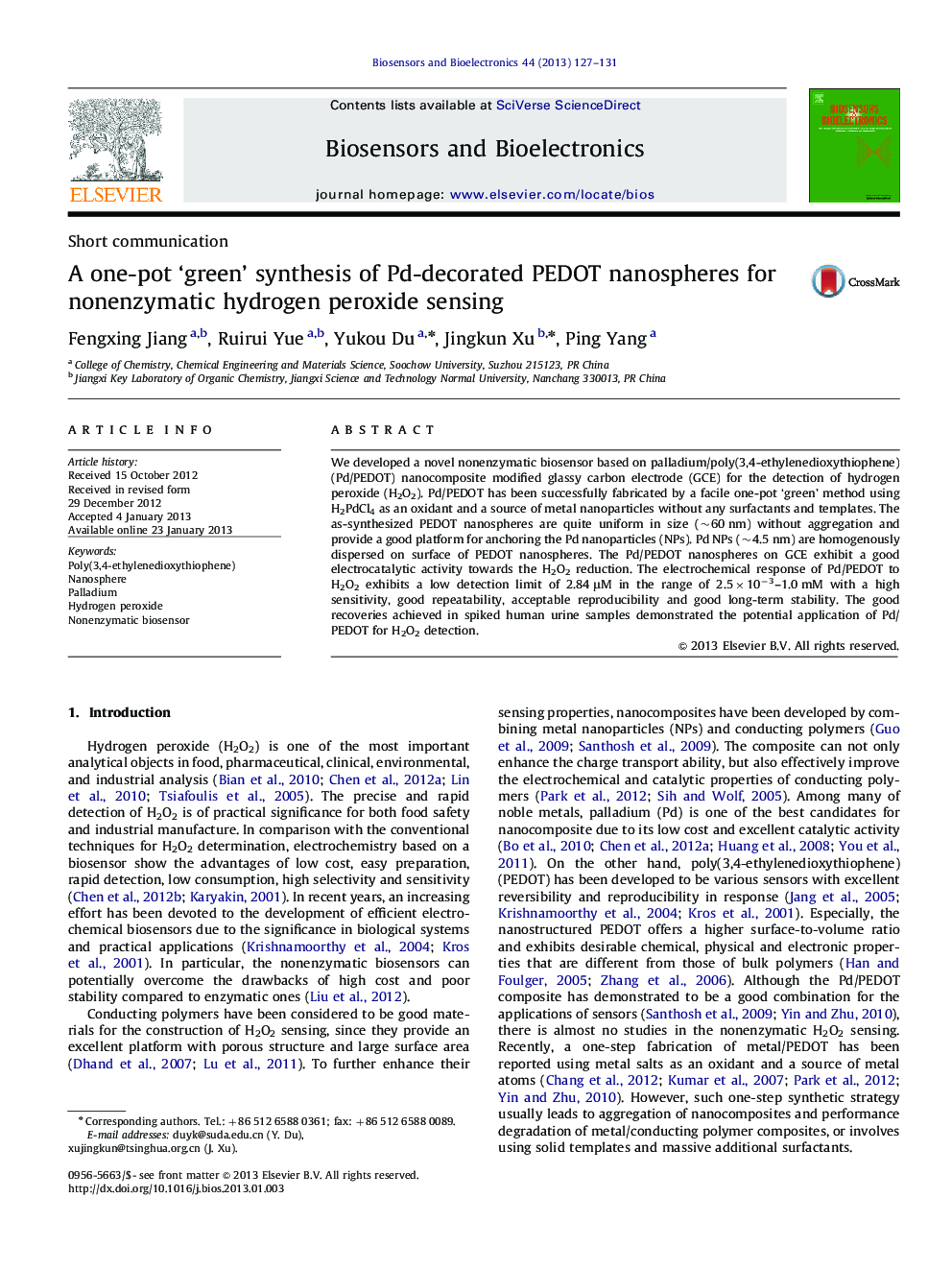| Article ID | Journal | Published Year | Pages | File Type |
|---|---|---|---|---|
| 866926 | Biosensors and Bioelectronics | 2013 | 5 Pages |
We developed a novel nonenzymatic biosensor based on palladium/poly(3,4-ethylenedioxythiophene) (Pd/PEDOT) nanocomposite modified glassy carbon electrode (GCE) for the detection of hydrogen peroxide (H2O2). Pd/PEDOT has been successfully fabricated by a facile one-pot ‘green’ method using H2PdCl4 as an oxidant and a source of metal nanoparticles without any surfactants and templates. The as-synthesized PEDOT nanospheres are quite uniform in size (∼60 nm) without aggregation and provide a good platform for anchoring the Pd nanoparticles (NPs). Pd NPs (∼4.5 nm) are homogenously dispersed on surface of PEDOT nanospheres. The Pd/PEDOT nanospheres on GCE exhibit a good electrocatalytic activity towards the H2O2 reduction. The electrochemical response of Pd/PEDOT to H2O2 exhibits a low detection limit of 2.84 μM in the range of 2.5×10−3–1.0 mM with a high sensitivity, good repeatability, acceptable reproducibility and good long-term stability. The good recoveries achieved in spiked human urine samples demonstrated the potential application of Pd/PEDOT for H2O2 detection.
Graphical abstractFigure optionsDownload full-size imageDownload as PowerPoint slideHighlights► One-pot facile synthesis of Pd-decorated homogeneous PEDOT nanospheres. ► No any surfactant and template to be used. ► 3D porous nanostructure for Pd/PEDOT nanospheres. ► Well-dispersed Pd nanoparticles on PEDOT nanospheres. ► High sensitivity and low detection limit for Pd/PEDOT as H2O2 sensor.
